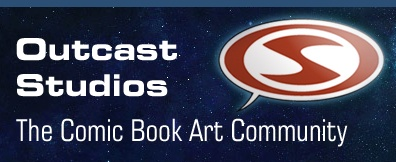This week, let's look into what is considered the first
Studio Ghibli movie (though it isn't!)
If you want to check out my previous reviews, follow
the Ghibli-Marathon tag or simply click over the above picture!
Considered by many, a classic of the Japanese animations - for both fans of anime or not. Let's review Miyazaki's big independent debut...
Movie: Nausicaä of the Valley of the Wind Directed by Hayao Miyazaki
Release date 1984
Genre Anime/fantasy adventure
Country Japan
Nausicaä of the Valley of the Wind is a post-apocalyptic animated filmd written and directed by
Hayao Miyazaki, and produced by his long time friend and co-animator
Isao Takahata, who had both been trying to launch their own anime studio for years.
Tired of all the usual commercial and cheap productions Japan had been producing for years, he experimented making movies for larger audiences
with more mature content and
serious production values.
The story of Nausicaä was actually based on a manga going by the same name, drawn and written by Miyazaki. Serialized from '82 to '94. it is about a princess from small kindom that is then brought into a war between empires. She tries to seek the coexistence between these different nations why preventing the humans own selfishness and ambitions from destroying nature in the process.
The movie is actually the adaptation (more or less) of the first chapters (2 of the 7 volumes).
Nausicaä is therefore an adaptation of a manga...which itself was originally inspired by the character Nausicaä from
Homer's Odyssey. This character served as basis for Miyazaki's story. The daughter of King Alcinous, trying to bring back peace in the middle of a imperial war amongst nation.
But back on the movie itself, shall we?
The film tells the story of
Nausicaä, a young girl, princess and fighter from the "
Valley of the Wind" who gets involved in a struggle between empires.
But let's start at the beginning first.
The story takes place a 1000 years after an apocalyptic event, called the "
Seven Days of Fire", it was a cataclysmic war that destroyed both the planet's civilizations and ecosystem.
Now, there are Toxic Jungles all over the world, also called the
Sea of Decay, where the air is toxic and there lies giant insects, the result of various evolutions and aberrations, nature's answer to man's destruction.
Nausicaä lives in this Valley of the Wind that is a place relatively protected from the toxic spores thanks to the air coming from the ocean.
A wise and mysterious man who lives there from time to time, called
Master Yupa, is searching for the "Man in Blue", he who will unite the people back with nature. To help him out, Nausicaä goes on exploration, searching from jungle to jungle and beyond the desert for this mysterious savior.
She uses this flying glider, a
Möwe, to move around.
Nausicaä is actually sort of able to talk to these giant insect creatures and would love to see peace returning to the world..
She is particularly found of the "insect kings", the Ohmus/
Ômus (depending on the version of the film).
One day, a giant airship crashes near the Valley.
Nausicaä notices it and tries to rescue a little girl she sees aboard.
The villagers soon find out it is the princess
Lastelle of Pejite.
Which brings war to the peaceful village.
The war is still going between various rival kingdoms. A military flying ship from the
Tolmekia (/Tolmek/Tolmèque) Empire comes around.
Nausicaä discovers an embroy of a
Giant Warrior in the first crashed airship - which are dangerous weapons created by man from the old war.
Lastelle was actually trying to destroy the monster, these embryos need to be destroyed!
But the empire Tolmekian wants to resort to what originally destroyed the world in their conflict against the Dork Empire.
The
Princess Kushana and
General Kurotowa invade the valley for the embryo...
Meanwhile, Nausicaä finds out the jungle is actually toxic because of what people did to the ground, plants actually grow in water beneath the sand and jungle.
The Tolmekia kingdom tries to use an ancient weapon too soon, to fend off from an Omhu attack...
Nausicaä must stop the Tolmekians from killing these insects, the survival of the planet depends on it!
Let's simply say it, Nausicaä is a gorgeous looking animated movie, with great animation quality, an amazing atmosphere and feel, a mature tone, fantastic orchestral music compositions and a great story to boot.
Miyazaki and his very competent staff did the impossible, made Japanese animation relevant again and popular worldwide with both fans and critics alike.
The movie's production was done in a record time of under 10 months (!!!) for a budget of about 1 million $USD, which at the time was a lot and without precedent.
It helped establish the
Studio Ghibli, which would be the home of various other Miyazaki and Takahata films for the following decades. That is why it actually is often considered part of Ghibli's filmography and legacy.
It went on to win several prizes and breached various records of the JKapanese box office and worldwide as well.
Originally
Tokuma Shoten wanted to turn Miyazaki's Nausicaä manga into a movie, but Miyazaki preferred to take the occasion to do so himself. It was then released by
Toei on March 1984.
There's a lot of Takahata as well as Miyazaki in this movie.
It really is a joint effort to launch their Studio Ghibli.
There's a lot of inspiration both brought in from their previous productions. Be it from
Lupin or
Horus. Mostly esthetically.
And as fantastic as it is, it is a story of characters before anything.
Ghibli's first leading female heroine, a model for generations to come.
Overall, it is a must see, simple as that.
Beautiful gorgeous looking, great and entertaining.
It's a movie for all, all ages and wherever you come from. It's an universal kind of story.
People fighting for peace, people raging war, nature being ignored and caught in the middle.
Environmentalist and meaningful.
But please, I will add this to this conclusion, please don't watch the butchered US translation from the late 90s - also re-released on DVD for some reason.
Avoid the version of the movie translated under the name
Warriors of the Wind at all cost!!
It was heavily edited and modified to be more "manly" and less "girly" as stereotypical 80s American cartoon companies would have put it. Avoid this release!!
Anyways, Nausicaä is a must watch!
I give it:2.5 / 3 DonPatchis!





































